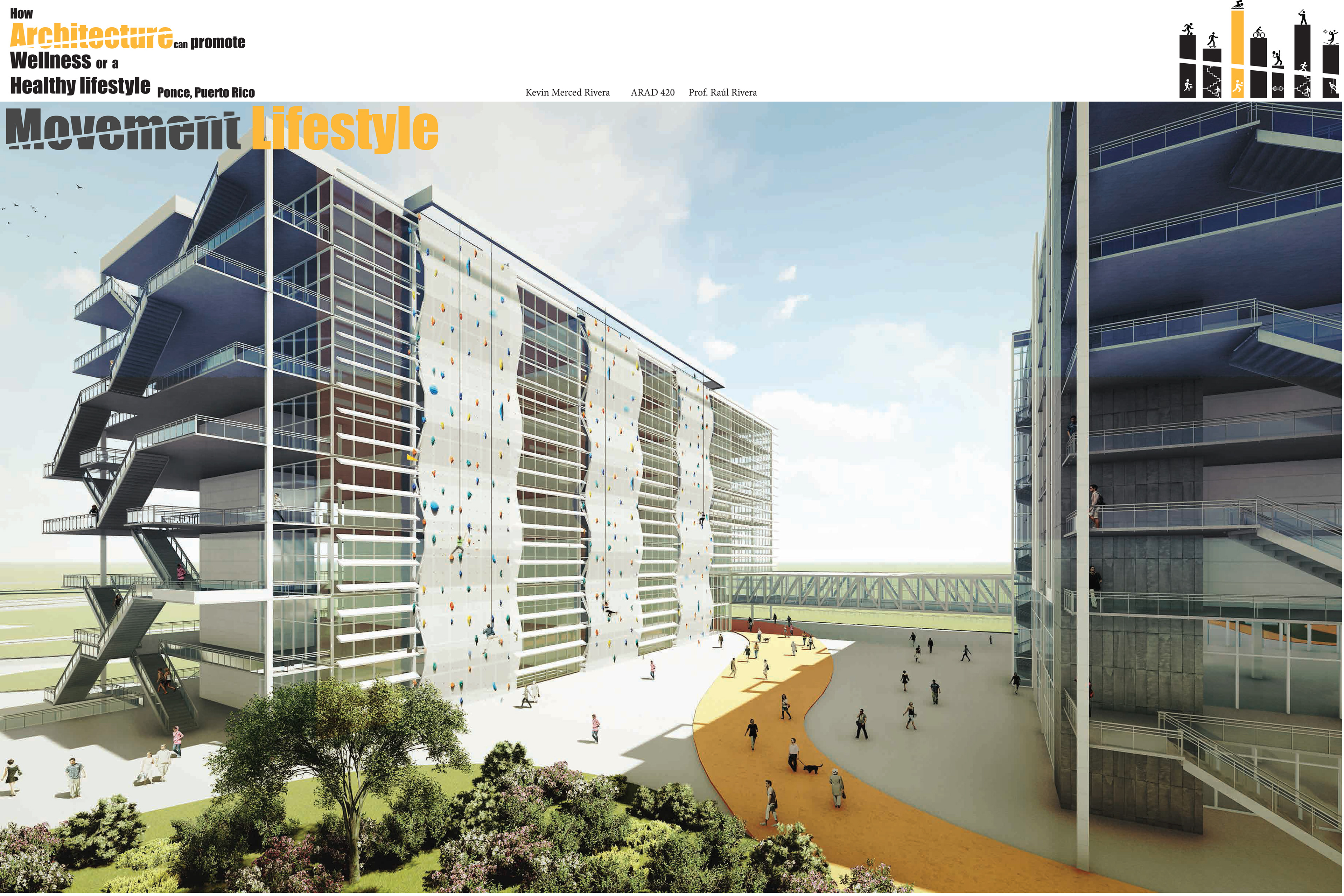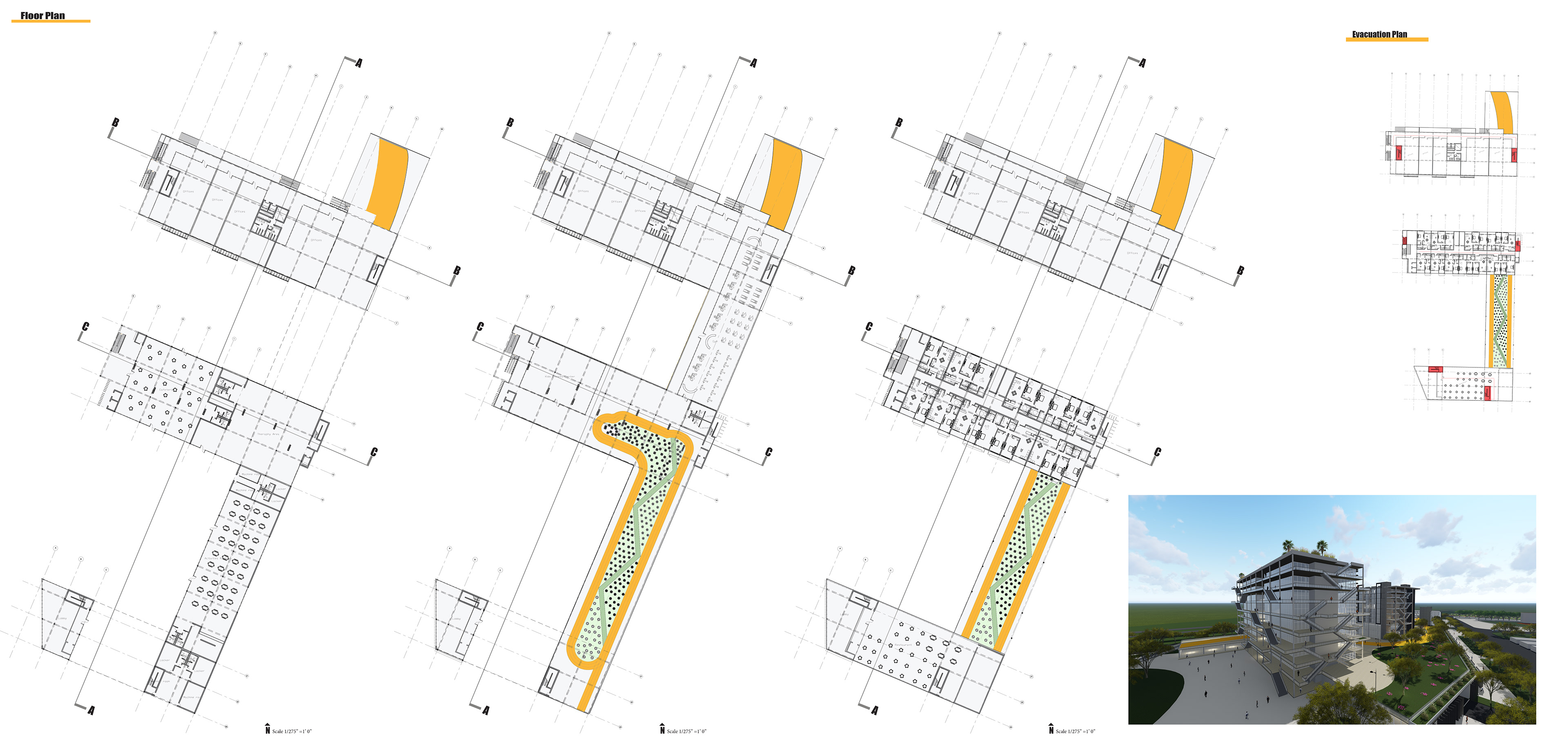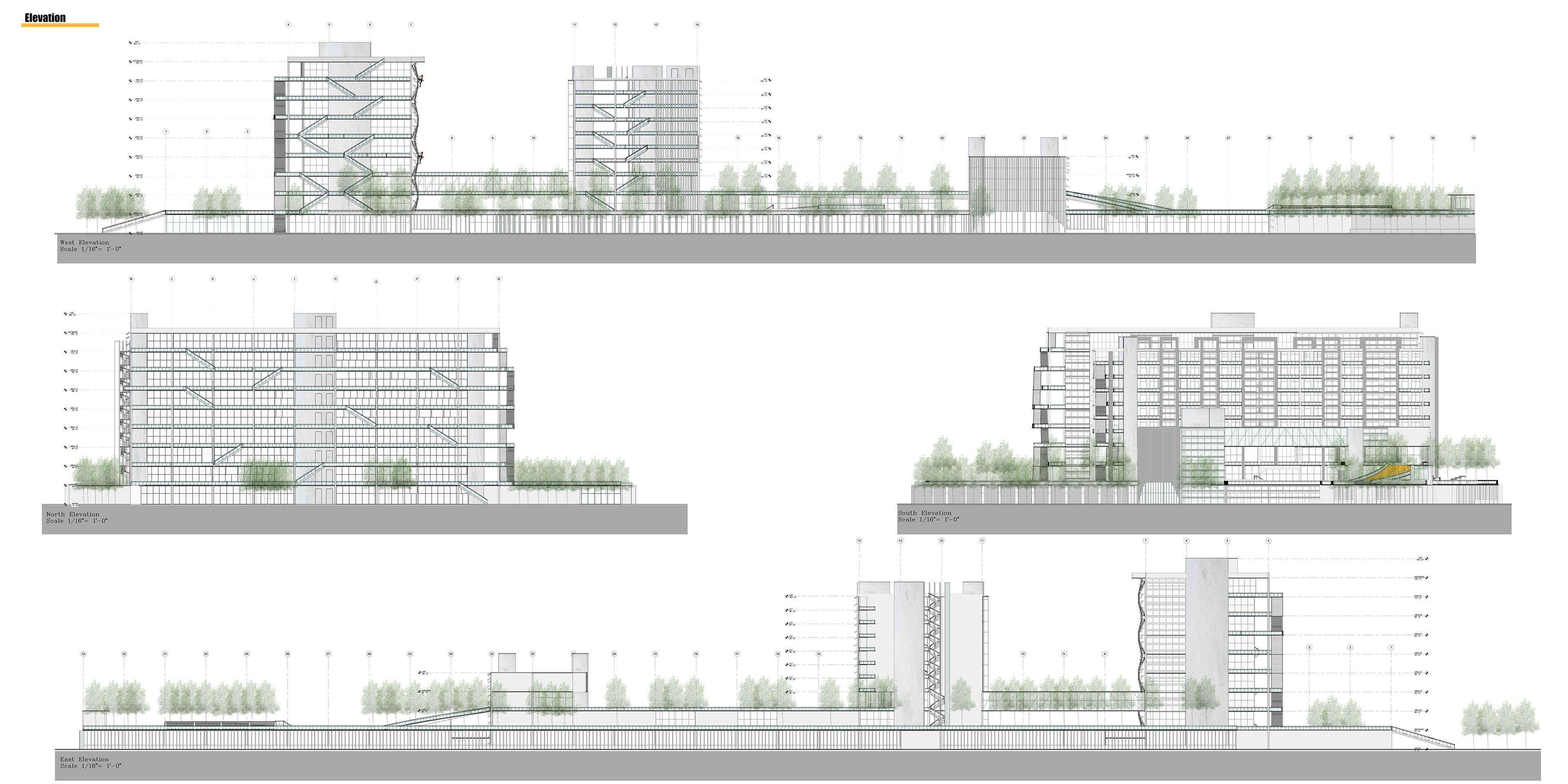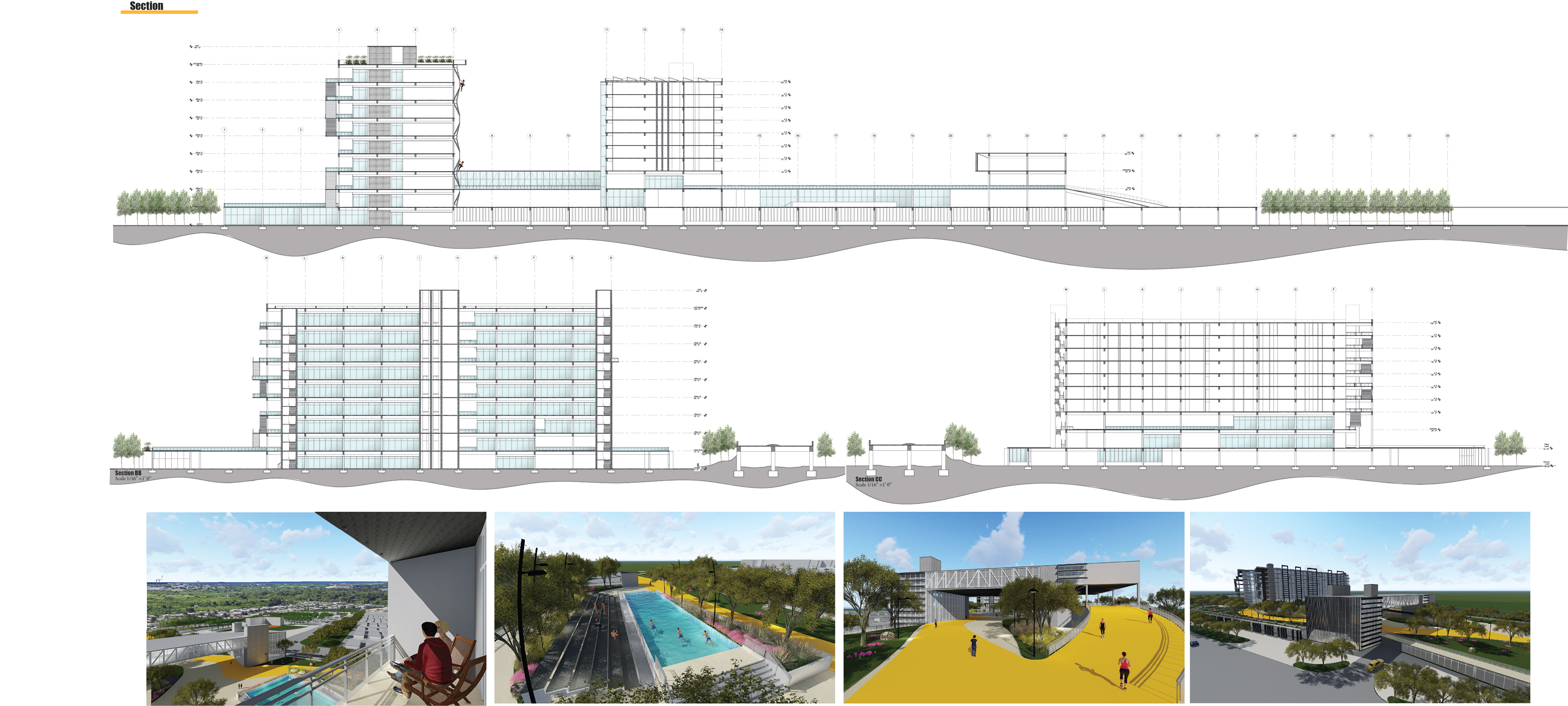





The following research work has as main objective to look for an answer of how architecture can help its user not to be sedentary in his work or housing area and at the same time keep him constantly active within each of these areas. It should help prevent obesity and overweight, since the prevalence of obesity is increasing in the world. Therefore, several strategies must be proposed in which architecture can promote well-being or a healthy lifestyle for its user. Consequently, the following question will be answered: Does architecture need to take any measures to help prevent obesity and overweight and, in turn, promote well-being or a healthy lifestyle? It is widely believed that architecture does not play any role in the bad eating habits and sedentary lifestyles of any person. These habits force obese and overweight people to remain seated for long hours in their daily routine, such as working hours, studies, when arriving at their homes, among others. Therefore, architecture has to take some measures to help prevent obesity and overweight and encourage its user to have a better well-being and lead a lifestyle. That said, the intention is to propose an architecture that offers options to solve the problem presented, incorporating it in different methods in which the user will be obliged to have long walks, climb stairs or have an environment of inspiration to perform exercises. In this way, various resources will be provided to promote calorie loss and lead the user to have a healthy lifestyle that in turn helps their well-being. In addition, through physical agility within space and encourage to consider a good diet. Therefore, the purpose of this research is to prevent more people from suffering serious health problems due to obesity and being overweight. In this way and with the correct design strategies, we will give our users a healthy quality of life, providing various resources and ways to stay less sedentary in their daily lives.





